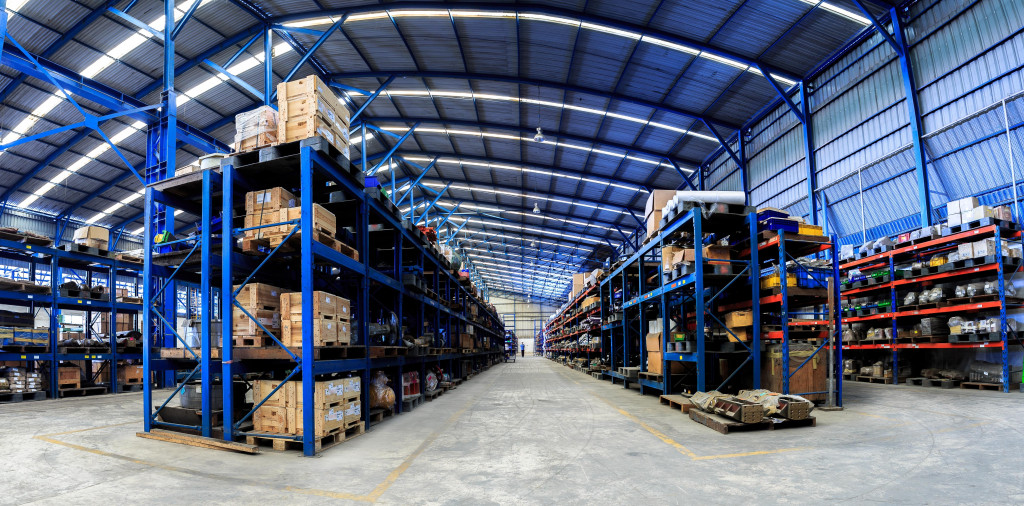Warehouse automation can be referred to as automating goods within the warehouses with little to no human intervention. This automation process can help firms reduce labor-intensive tasks such as repetitive physical labor, manual data entry, and analysis as part of an automation initiative.
Today, automation tools are much more advanced and managed services for IT are of great help. They allow outsourcing IT infrastructure management to the experts to leverage the benefits of technology. They also enhance the firms’ strategy, fundamentals, security, decision-making, reliability, and backup capabilities. This facilitates the workers to save their time and focus on more value-added activities.
Moreover, the advancements in technology are influencing new trends in global warehouse management. From IoT to Augmented Reality to Robotics, almost every current warehouse management trend is influenced by technology.
Internet of Things (IoT)
The IoT technology can connect all your devices and systems, keeping them in accord while also collecting essential operations data. With the use of IoT, 24/7 tracking of anything from lighting to shipment can be enabled.
For example, the RFID tags attached to the product packaging can aid the tracking of all items’ movement throughout the warehouse and supply chain. Similarly, IoT sensors can help monitor the temperature of any packaged item that requires to be kept within a temperature range. RFID and IoT technology ensures great visibility into your inventory with their constant monitoring and tracking features.
Robotics
Autonomous robotic forklifts are currently in use in a rising number of warehouses and distribution centers. It allows companies to reduce labor costs, optimize workflow, etc., with some common jobs like pickers, inventory data, pallet builders, floor cleaners, etc.
Using robotics in the warehouses improves the safety of the workers who suffer extreme injuries from repetitive tasks like lifting heavy products. Additionally, even the best workers can make mistakes by damaging the end product while shifting it. Robots can mitigate these mistakes and significantly improve the accuracy level.
The great thing is that technology has come so forward that different types of robots can handle various tasks required in everyday operations. Here’s a list of some of those robots.
Cobots
Instead of completely replacing humans, Cobots work alongside them to complete a task. You can use them for picking, packaging, and assembly tasks. Using Cobots in your warehouse can increase productivity, safety, and precision; while reducing costs.
AGVs
AGVs or automated guided vehicles are used for goods transportation pre-programmed in the warehouse or manufacturing environment. They can follow approved tracks that are marked with fixed markers or wires on the warehouse floor.
AMRs
Autonomous mobile robots are vehicles that navigate independently in any environment without any assistance from physical guides or markers. It can understand its location from one waypoint and plan its course to reach the desired destination.

Big Data and Analytics
In today’s digital era, every machine used in the warehouse can generate data. You must assess this data to identify areas that can be optimized to leverage business opportunities.
The massive data sets that these machines generate are called big data, which can be extremely tough to maintain. However, big data and analytics advancements greatly help manufacturers to control data to identify the mistakes and improve upon them. For example, big data can be analyzed to generate actionable insights.
Voice Assistants
The ability to operate various devices and processes with your voice truly enriches the smart technology experience. It is simple, hands-free, and convenient to be able to instruct Alexa to do a task. It can improve operations and safety by reducing human distraction when combined with warehouse automation.
Voice assistance technology can pick your orders by talking to the clients, switch the lights on or off, etc.
Augmented Reality
In warehouse automation, AR is redefining instructions, training, and coaching. It can help in optimizing the use of warehouse space through an interactive, digital 3D warehouse layout. Also, it allows package pickers and workers to function hands-free.
For example, google glass in an industrial setting with access to digital information. It can enable workers to pick stats, receive navigation support or get digital help such as items or boxes highlighted for easier identification.
Gamification
The concept of gamification in the warehouse is that usually dull warehouse jobs like picking can be developed into a game-like environment with incentives. Gamifying the selecting process could entail rewarding the employee who covers most orders at the station with points. However, it is the manufacturer’s discretion what jobs must be gamified. Additionally, there are several programs to assist with the implementation of these new tools.
The trend in warehouse automation is that it will be more interconnected and more automated. With the rise of Artificial Intelligence and IoT technologies, we can expect more automation in warehouses. This will help cut costs and make production more efficient, especially for companies that rely on shipping and delivery.
